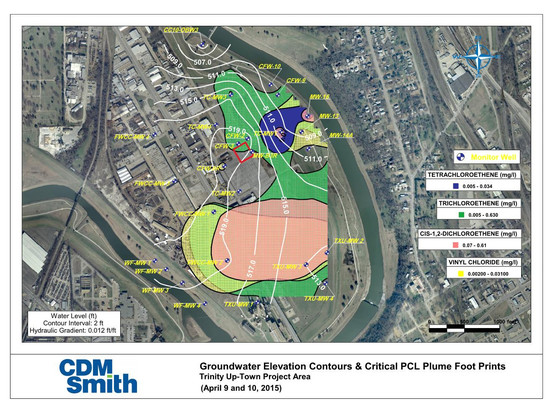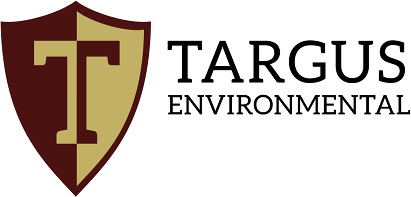The subject property was previously occupied by chemical processing facilities without well-documented operations and was slated for future commercial development in an area to be protected by portions of an improved downtown Trinity River floodplain. Prior on-site releases of halogenated volatile organic compounds (cVOCs) had affected both soil and groundwater which was found to be threatening potential impact to nearby surface water. Not only was the subject property a source of groundwater contamination, but the plume originating on-site overlapped with other plumes containing the same contaminants.
The Trinity River Vision Authority (TRVA) engaged CBI-Shaw to manage assessment and remediation of scores of sites within the larger Panther Island project, a floodplain reclamation program for brownfield redevelopment the northern portion of downtown Fort Worth. Targus was engaged as a subconsultant to CBI-Shaw to assist in support of this project, among many others. Targus’ services included review and comment on VCP RAP, with emphasis on responding to the agency reviewer and calculating protective concentration levels (PCLs) applicable to the off-site Trininty River and to potential future occupant inhalation. Additionally, Targus personnel conducted sampling and analysis of soil being pre-treated in-situ in an effort to facilitate off-site landfill disposal as waste at concentrations that did not exceed Resource Conservation and Recovery Act (RCRA) land disposal restrictions.
Treatment consisted of in-situ chemical oxidation implemented through injection using a large diameter caisson auger driven by a modified excavator. The potassium permanganate solution was applied at varying dosages estimated from total cVOC content and adjusted based on subsample analysis. The process involved successive overlapping rows of overlapping passes on each row. Upon completion of soil treatment and removal, excess permanganate solution was injected into the underlying ground as a means for further destruction of residual cVOCs.
Thereafter, Targus’ personnel coordinated with TRVA’s other consultant to develop and appropriate groundwater treatment and monitoring strategy to demonstrate that plume expansion had been halted and was protective of surface water receptors, applying site-specific groundwater to surface water attenuation factors. After a period of interaction between the client and the regulatory agency a solution was devised to facilitate future non-residential occupancy – pending future Congressional funding of the Corps floodplain reclamation plan.

